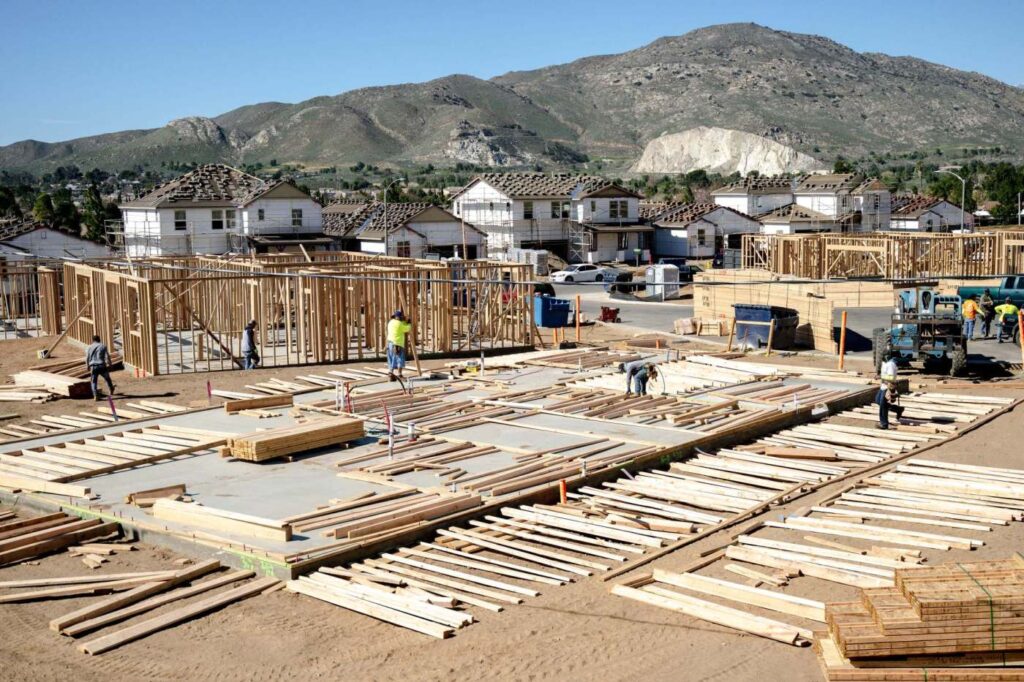
By Carolyn Coleman | Special to CalMatters
Coleman is executive director and CEO of the League of California Cities.
Recent headlines about California’s housing crisis fixated on a sensational story about a protected species, but unfortunately, they didn’t focus on the real elephant in the room – the millions of new homes that cities have planned and approved despite the many obstacles in their way.
The real story, which feels like a well-guarded secret, is that day in and day out cities are approving new homes at all income levels. By the end of 2022, hundreds of local governments will have identified and planned for more than 2 million units of additional housing. And that is on top of the millions of homes that cities have already planned, zoned and approved in recent years.
Carolyn Coleman is executive director and CEO of the League of California Cities. (Courtesy of CalMatters and Eleakis & Elder Photography)
The supply and affordability of housing is one of the most critical issues facing Californians, and city leaders see the impact every day in their communities. That’s why cities are streamlining permitting systems, waiving fees to incentivize development, implementing plans that encourage transit-oriented development, adopting accessory dwelling unit ordinances and increasing density, all in an effort to make the California Dream attainable for everyone.
To truly understand this story, let’s pull back the lens and look at examples of the progress being made and focus on how we can further those efforts.
Thanks to years of planning and policymaking, the city of Merced is experiencing a construction boom, adding roughly 700 new single-family homes per year and 400 multifamily units over three years. City officials developed strategies, such as “off-the-shelf” building plans, to expedite construction and keep costs down.
Irvine created an online system to apply and pay for planning and building applications, engineering reviews and permits, including downloadable city-stamped permits. The result? Hundreds of new homes approved at various market-rate and affordable price points since the program’s 2019 launch, including 140 affordable housing units.
Manteca planned and approved more than 8,500 housing units over the past eight years, twice the state requirement.
Sacramento has nearly 24,000 housing units in the pipeline, issuing nearly 3,100 home permits in 2019 alone.
And then there is Banning, one of the fastest growing cities in California, where the total number of housing units grew by about 4% in 2020, with another 8,500 approved homes currently going through the development process.
And the list goes on.
These are just a few examples of cities and towns throughout the state that are successfully planning and zoning for more housing. And they are succeeding despite the state’s annual barrage of overreaching housing bills, and the absence of any long-term funding to incentivize housing production.
Cities are scrambling to implement the wave of more than 60 new housing laws that went into effect in the last few years, many of which are void of any guarantee that our shared goals to increase housing supply will be achieved.
Related links
18% of US homes bought by investors, highest this century
Condo questionnaire causing some boards to boycott Fannie, Freddie financing
2021 home-price jumps: 19.2% in LA-Orange County, 19.8% nationally, says Case-Shiller
Californians 35% less likely to qualify for starter home than US house hunter
Buying is more affordable than renting in these cities
Big problems require bold solutions. Another barrage of housing bills this legislative session will not solve California’s housing crisis. What we need from the state is an ongoing funding commitment to support housing production, subsidize affordable housing and invest in supportive infrastructure.
A decade ago, the state eliminated local redevelopment agencies and wiped out the only source of existing and ongoing funding available to cities to support affordable housing production.
Since then, the state has allocated only short-term funding to cities to support housing supply and affordability. While appreciated, this approach falls short. When cities are required to plan for eight years of housing, it’s reasonable to ask the state to commit to at least eight years of funding to support the implementation of those plans.
Let’s get back to the elephant in the room. Cities work every day to do their part to increase housing supply and have planned and zoned for millions of new homes. But California will never produce the number of homes needed without a long-term investment that matches the scale of this long-term crisis.
_____
Carolyn Coleman has also written about how state legislation should support efforts for more housing, that cities need more funding for safety, and that cities are committed to addressing the housing shortage.
